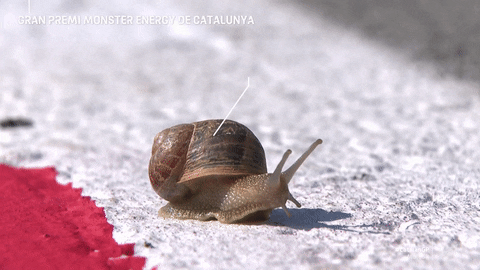I do things slowly.
How will you judge me? Lazy? Dumb?
Well, hold on that as we explore Slowness in this edition of Atomic Ideas newsletter.
But before that, a quick update: we’ll soon move out of substack to our own newsletter system as there have been many payment failures and importantly, am not too happy with the lack of control on the number-of-emails-to-ask-to-subscription (it’s way too annoying and I really apologize for this).
Nothing changes for subscribers (free or paid) but treat this as a FYI.
Now, back to the topic. Slow vs. Fast. First, here is one truth that we all definitely seem to believe in,
The world is still straining to do everything faster—and paying a heavy price for it. The toll taken by the hurry-up culture is well documented. We are driving the planet and ourselves towards burnout. We are so time-poor and time-sick that we neglect our friends, families and partners.
We barely know how to enjoy things anymore because we are always looking ahead to the next thing. Much of the food we eat is bland and unhealthy. With our children caught up in the same hailstorm of hurry, the future looks bleak.
Why are we always in such a rush? What is the cure for time sickness? Is it possible, or even desirable, to slow down?
5 core ideas from the book In Praise of Slownes: Challenging the Cult of Speed by Carl Honoré.
First of all, how did we get so fast?
Ans: Timekeeping
Ancient civilizations used calendars to work out when to plant and harvest crops. Timekeeping proved to be a double-edged sword. On the upside, scheduling can make anyone more efficient, from peasant farmers to software engineers. Soon enough, the tables turn, and time takes over.
We become slaves to the schedule, post industrial revolution.
Speed is not bad.
Speed has helped to remake our world in ways that are wonderful and liberating. Who wants to live without the Internet or jet travel?
The problem is that our love of speed
Our obsession with doing more and more in less and less time, has gone too far; it has turned into an addiction, a kind of idolatry.
Even when speed starts to backfire, we invoke the go-faster gospel.
“Instead of thinking deeply or letting an idea simmer in the back of the mind, our instinct now is to reach for the nearest sound bite.”
The Solution? The Slow Philosophy
Fast and Slow do more than just describe a rate of change. They are shorthand for ways of being, or philosophies of life. Fast is busy, controlling, aggressive, hurried, analytical, stressed, superficial, impatient, active, quantity-over-quality.
Slow is the opposite: calm, careful, receptive, still, intuitive, unhurried, patient, reflective, quality-over-quantity. It is about making real and meaningful connections — with people, culture, work, food, everything: Carl Honoré.
…the Slow philosophy can be summed up in a single word: balance. Be fast when it makes sense to be fast, and be slow when slowness is called for. Seek to live at what musicians call the tempo guisto — the right speed.
Slow means doing everything slowly?
Isn’t that dumb? Isn’t it for oldies?
First thing, Slow does not always mean slow. Slow is NOT anti-speed.
Infact (many a times), performing a task in a Slow manner often yields faster results. It is also possible to do things quickly while maintaining a Slow frame of mind.
A century after Rudyard Kipling wrote of keeping your head while all about you are losing theirs, people are learning how to keep their cool, how to remain Slow inside, even as they rush to meet a deadline at work, or to get the children to school on time.
Time Is Actually Cyclical
Part of the problem may lie in the way we think about time itself.
In Chinese, Hindu, and Buddhist traditions, time is cyclical. On Canada’s Baffin Island, the Inuit use the same word—uvatiarru—to mean both ‘in the distant past’ and ‘in the distant future.’
The Hindu word Kal (कल) means both yesterday and tomorrow.
Going Round and Round: Time, in such cultures, is always coming as well as going. It is constantly around us, renewing itself, like the air we breathe.
Time is linear in Western culture, like an arrow that flies mercilessly from point A to point B. Because it is limited, it is a priceless resource.
How to achieve Slowness?
One way to cultivate inner Slowness is to make time for activities that defy acceleration — meditation, knitting, gardening, yoga, painting, reading, walking, Chi Kung.
My fav among these is walking (I have started to walk to office atleast 2 days a week) and the author shares a very interesting perspective.
Walking, the oldest form of exercise, is making a comeback. In the pre-industrial era, people mostly travelled on foot—and that kept them fit. Then came engine power, and people got lazy. Walking became the transport of last resort, a ‘forgotten art’ in the words of the World Health Organization.”
Being Slow means that you control the rhythms of your own life. You decide how fast you have to go in any given context. If today I want to go fast, I go fast; if tomorrow I want to go slow, I go slow. What we are fighting for is the right to determine our own tempos.” — Carlo Petrini, founder of Slow Food
Finally, it’s your choice. Whether to go Slow and enjoy the subtleties around or go fast and burn-out.
Have a great weekend!
-ashish.




